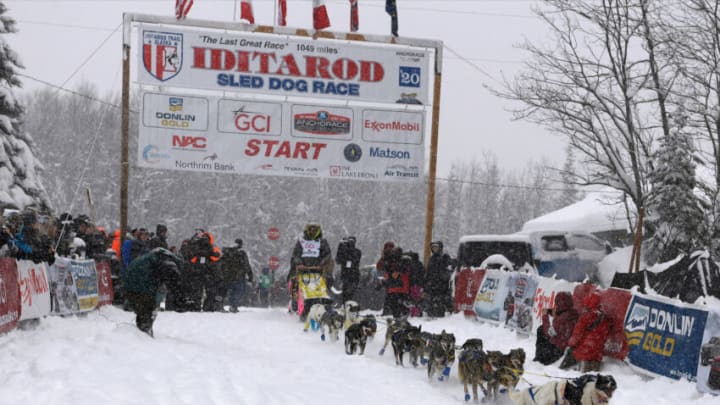The Iditarod dog race has come to be known as one of the most grueling dog sled races the world over. This year, a new champion was crowned, and his family is no stranger to the goings on.
Ryan Redington won the race this year—an arduous task after all, and it didn’t come to fruition without quite a wee bit of difficulty. As it turns out though, Redington is the grandson of one of the race’s founders, Joe Redington Sr.
Redington Sr. is well known in dog racing circles and has the moniker “Father of the Iditarod.” I mean if metal has its very own godfather in Ozzy Osbourne, then it’s only fitting for dog sledding to have its very own icon and Ryan’s grandpa is certainly that guy.
“My grandpa, dad and Uncle Joe are all in the Mushing Hall of Fame. I got big footsteps to follow,” Ryan has said.
The Iditarod race was started 50 years ago, way back in 1973. The race runs from Anchorage, Alaska to Nome, Alaska every year. The race is a recorded 938 miles long.
Is the Iditarod dog race safe? Keep reading to join the discussion…
A total of 33 mushers (racers) started the race on March 5th this year and conditions were brutal this year—high temperatures and all. Some of the areas traveled during the race included the Bering Sea and the Yukon River.
As has been reported by City News, the winner, Redington, looks to make $50,000 in winnings. Redington lives in both Alaska and in Wisconsin where he trains his dogs. He also runs a sled dog tour near Anchorage during the summer. The rest of his year is spent racing.
One of his dogs did suffer an injury during the race. Wildfire is his name, and he sadly injured his fibula, femur and tibia during all that running. He’s on the mend now, according to reports.
Over the years, dog sledding has gotten a bad rap, many wondering if the sport is cruel to the animals involved. According to a piece up at nomadasaurus.com, that isn’t necessarily the case for all organized dog races, apparently.
This despite some horrible records that have shown a very high death and peril rate suffered by race dogs: a total of 107 dogs sadly passing during the 1997 race alone—a single race! There are other horror stories as well, according to the aforementioned report.
Also published in the same report are witness accounts by specialists in the dog racing community and veterinarians, who have gone on record to say that the dogs actually love the environment and were built for it, and despite the dangers, the environment of a race is in fact favorable for the dogs in question.
Proper care is taken for the dogs apparently: checkups, proper food, rest and shelter for the dogs during training and during the races they are entered in as well.
The writers of the piece in question, Alesha and Jarryd, did go on to say that the Iditarod race is unfortunately rich with the aforementioned sad stories, but there are races, particularly the Yukon Quest, which apparently doesn’t have the same stigma attached to it.
In the end, take what you will from these testimonials, but if you ask this writer, no dog’s life is worth any amount of money, and if the Iditarod is dangerous in any way to the life of an animal, then proper care should be taken to limit and abolish all dangers present within that realm.
If the Yukon Quest can do without terrible losses, then the same should be done by one and all race organizers out there.
This year’s race doesn’t seem to have suffered any lives of dogs, but in the past, race officials have kept that number from the press, according to a report at sentientmedia.org, so a sense of transparency is missing here, sadly.
Of course this bit of info brings up many questions, as pieces like this should. Bitter sweet? I’d say so. The sweet comes at the win, the success of the winner and the ability to help tourism for Alaska grow, but at such a cost.
In the end, if the dogs are in danger, something needs to be done…something that can allow the industry to flourish and the 50-year tradition to continue but not at the expense of any more dogs’ lives.
What do you think, dear readers? What can be done? A review of the rules and grueling conditions placed on the mushers and dogs? Regardless, a change is evidently necessary.
